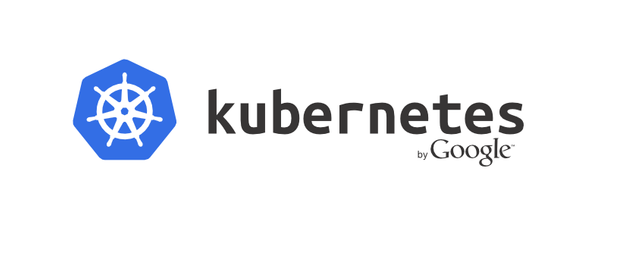Kubernetes Tutorials and Guides – Learn Kubernetes The Easy Way
Need to learn Kubernetes, however, don't realize where to begin? I was in a comparable situation, and subsequent to perusing various Kubernetes instructional exercises, I understood there must be a less demanding route for novices to learn.

Having as of late joined LogDNA, I will share what I realized in the previous two weeks, and also the best assets I found – funnies, guides, instructional exercises – all so you can go from zero to Kubernetes master in a matter of moments.
To be completely honest, I began building PHP and WordPress locales long prior, and I am for the most part comfortable with "antiquated" self-facilitated solid applications. I'm an amateur with regards to compartments and holder arrangement.
Shockingly, all things considered, it was through a progression of funnies that I found my heading of what Docker compartments and Kubernetes is. The first and best was made by Google: Smooth Sailing with Kubernetes. I exceedingly suggest perusing this first.
What Are Containers?
The most recognizable reference that I need to contrast holders with are Virtual Machines. Virtual Machines offer disconnection at the equipment level, where a server offers visitor working frameworks to keep running over it. VMWare as well as Microsoft Hyper-V, Citrix XenServer, and Oracle VirtualBox all with Hypervisors that empowered equipment virtualization and let every visitor OS approach CPU, memory and different assets. The confinements with VM was that every visitor working framework had its very own extensive impression full OS picture, memory and capacity necessities. So scaling them was exorbitant and the applications weren't versatile between facilitating suppliers, and private/open mists.
Holders sit over the physical equipment and its host working framework to share the host OS' part, pairs, and libraries. Along these lines they're considerably more light weight with picture sizes in the megabytes rather than gigabytes and can start up in seconds as opposed to minutes. Alongside evident execution benefits, they additionally decrease the executives overhead of refreshing and fixing full working frameworks and they're significantly more versatile to various facilitating suppliers. Different holders can keep running on a solitary host OS which spares working expenses.
Consolia's comic offers an incredible representation of the distinction among VM and Containers: https://consolia-comic.com/funnies/compartments and-docker
Also, xkcd offers some amusingness on holders.
Docker needed to enable engineers to make, convey and run applications using holders. With Docker holders, they concentrated on quicker arrangement speeds, application versatility, and reuse. Docker does not make a whole virtual working framework and will necessitate that the parts that are not as of now on the host OS to be bundled inside the compartment. Applications will be bundled up with precisely what they have to run, no more and no less.
Some intriguing data on Docker compartments and how extraordinarily rapidly they've been embraced the world over:
It was just discharged in 2014
Over 3.5M applications have been put in holders utilizing Docker
37B containerized applications have been downloaded up until this point
What is Kubernetes?
This Illustrated Children's Guide to Kubernetes is great at clarifying the requirement for Kubernetes.
Google made and publicly released the Kubernetes organization framework for docker compartments. It is utilized to computerize the arrangement, scaling and the executives of containerized applications.
People Also Read:
https://hackr.io/tutorials/learn-docker
Google keeps running more than 2 billions compartments for each week and manufactured Kubernetes to have the capacity to do as such at overall scale. The thought is to give apparatuses to running conveyed frameworks underway like load adjusting, moving updates, asset observing, naming and disclosure, auto-scaling, mounting stockpiling frameworks, reproducing application occasions, checking the wellbeing of uses to log access, and support for thoughtfulness.
Kubernetes enables engineers to make and oversee bunches and scale them. Brian Dorsey's discussion at GOTO 2015 gotten from idea to seeing a genuine case of organization, replication and updates inside 60 minutes.
Side note, I'm right now perusing Google's SRE book and dazed by their account of scaling up.
Step by step instructions to Get Started
I began with the official docs of Kubernetes Basics And then pursued this Hello World Mini Kubes instructional exercise. I'm simply advancing through this brilliant instructional exercise currently considered Kubernetes the Hard Way.
Up until this point, now that I have a fundamental comprehension of Containers and Kubernetes, I'm extremely energized at all its conceivable outcomes. It's extraordinary to see that such incredible devices are accessible to all, both for designers to do CI/CD and particularly for devops to scale, look after all day, everyday accessibility paying little mind to what occurs and get a decent night's rest without cautions of calamitous disappointments.
I'm likewise understanding that utilizing Kubernetes likewise requires the utilization of other extra apparatuses like Helm for overseeing Kubernetes bundles and assists the requirement for concentrated logging and checking instruments. It's not as basic as signing into a server to take a gander at a log record any longer when you're managing numerous reproductions and hubs that begin and stop on the fly. As you think of your Kubernetes logging technique, here are some key Kubernetes measurements to log. It's cool to perceive how LogDNA explains this reconciliation with Kubernetes superior to some other log the executive's arrangement in the market. You have a decision of doing this without anyone's help or get ready for action with only two lines.